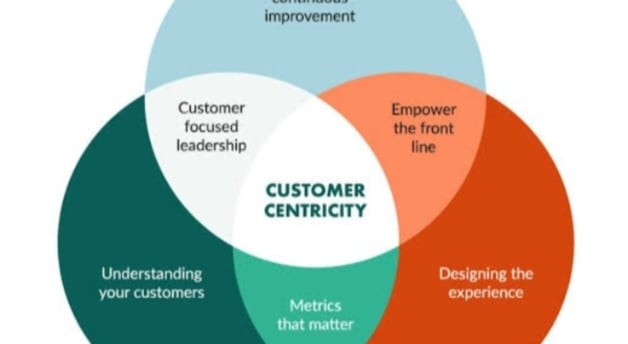Building Problem-Centric Solutions to Alleviate Customer Pain Points
Customer Centricity in agile and scaled agile world
Roopesh Yogiputr Mathur CTO AgileDevOps Smart Management Consultancy
1/13/20243 min read


Introduction
When it comes to building solutions for our customers, the focus should not solely be on being customer-centric. While understanding our customers' needs is important, it is equally crucial to identify the problems they face and develop problem-centric solutions to address their pain points. In this article, we will explore the concept of problem-centric solutions and how they can help alleviate customer pain points.
Understanding the Customer
Before we delve into problem-centric solutions, it is essential to have a thorough understanding of our customers. This involves conducting market research, gathering customer feedback, and analyzing their behaviors and preferences. By doing so, we can gain insights into the challenges they face and the pain points they experience.
The Limitations of Customer-Centric Approach
While being customer-centric is a valuable approach, it has its limitations. Customers may not always be aware of the underlying problems causing their pain points. They might only be able to articulate their needs, without fully understanding the root cause of their challenges. This is where problem-centric solutions come into play.
What are Problem-Centric Solutions?
Problem-centric solutions focus on identifying and addressing the root causes of customer pain points. Instead of solely relying on customer feedback, problem-centric solutions involve a deeper analysis of the challenges faced by customers. By understanding the underlying problems, we can develop innovative solutions that truly alleviate their pain points.
The Benefits of Problem-Centric Solutions
1. Accurate Problem Identification: By taking a problem-centric approach, we can accurately identify the root causes of customer pain points. This allows us to develop solutions that directly address these issues, leading to more effective and impactful outcomes.
2. Enhanced Customer Satisfaction: When customers see that their pain points are being addressed effectively, their satisfaction levels increase. Problem-centric solutions demonstrate that we understand their challenges and are committed to finding the best possible solutions for them.
3. Competitive Advantage: Developing problem-centric solutions sets us apart from our competitors. By focusing on the underlying problems, we can create unique and innovative solutions that differentiate us in the market.
4. Long-Term Customer Relationships: Problem-centric solutions help build trust and foster long-term relationships with customers. By consistently addressing their pain points, we establish ourselves as reliable partners who are invested in their success.
Implementing Problem-Centric Solutions in Agile and Scaled Agile
Problem-centric solutions can be effectively implemented in both agile and scaled agile environments. Here are some key considerations:
Agile Environment:
- Encourage cross-functional collaboration: In an agile environment, it is crucial to foster collaboration between different teams and stakeholders. This allows for a holistic understanding of customer pain points and facilitates the development of problem-centric solutions.
- Iterative approach: Agile methodologies promote an iterative approach to development. By continuously gathering feedback and iterating on solutions, we can ensure that problem-centric solutions are refined and optimized over time.
- User stories: User stories are a valuable tool in agile development. By framing user stories around the underlying problems rather than just the needs, we can ensure that the solutions we develop directly address the root causes of customer pain points.
Scaled Agile Environment:
- Aligning business and IT: In scaled agile environments, it is essential to align business and IT functions. By ensuring that both sides have a deep understanding of customer pain points, problem-centric solutions can be developed collaboratively.
- Value stream mapping: Value stream mapping is a valuable technique in scaled agile environments. By mapping out the entire value stream, we can identify bottlenecks and areas where customer pain points are most prevalent. This enables us to prioritize problem-centric solutions and allocate resources effectively.
- Continuous improvement: Scaled agile environments emphasize continuous improvement. By regularly reviewing and refining problem-centric solutions, we can ensure that we are consistently addressing customer pain points and delivering value.
Conclusion
Building problem-centric solutions is a crucial aspect of alleviating customer pain points. While being customer-centric is important, it is equally essential to understand the underlying problems causing those pain points. By taking a problem-centric approach, we can develop innovative solutions that directly address the root causes, leading to enhanced customer satisfaction, competitive advantage, and long-term customer relationships. Implementing problem-centric solutions in agile and scaled agile environments requires cross-functional collaboration, an iterative approach, and a deep understanding of customer pain points. By embracing problem-centric solutions, we can truly make a difference in the lives of our customers.
